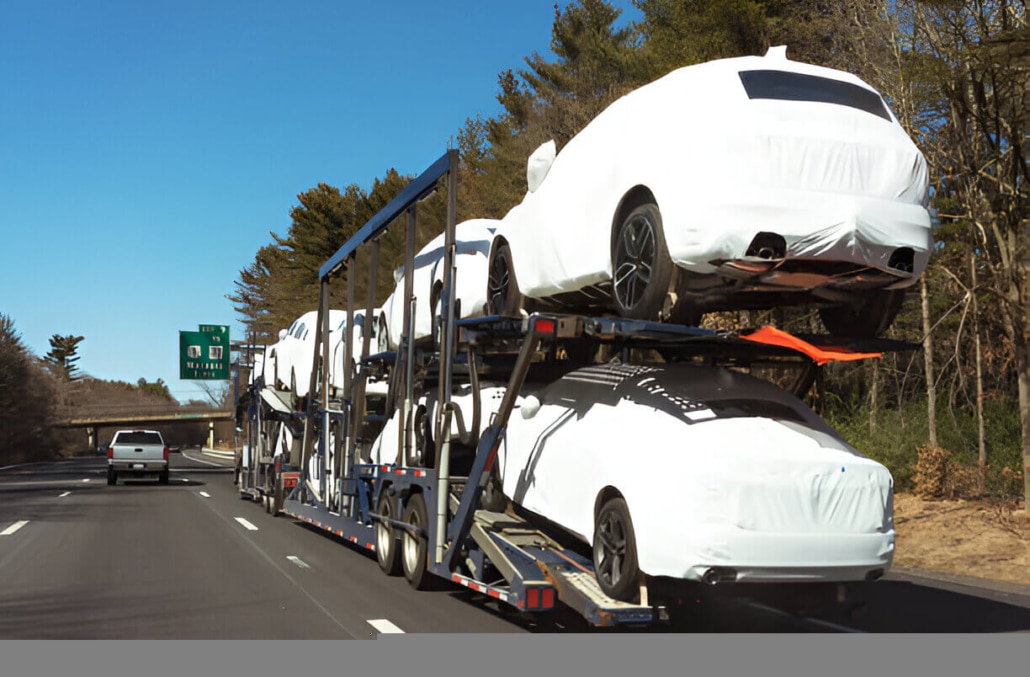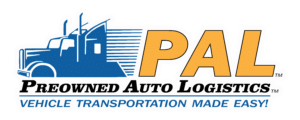Seasonal Guide to Planning Your Interstate Auto Transport
Seasonal Guide to Planning Your Interstate Auto Transport
Planning on shipping your car across state lines? Don’t let Mother Nature get in your way! The time of year you pick to ship your vehicle can really affect costs, timelines, and even its safety. Whether you’re dealing with icy winter roads or busy summer travel, every season brings its issues and benefits. In this Seasonal Guide to Planning Your Interstate Auto Transport, you’ll see how the time of year can change the whole process and make a big difference.
Knowing these seasonal details isn’t just about saving money and cutting costs. It’s about making sure your car arrives safe and on time. Whether it be moving for work, leaving the cold behind as a snowbird, or taking a classic car to a show, timing is the key. At Preowned Auto Logistics, we’re experts at helping our clients handle these seasonal challenges all year. Let’s break down how you can plan your auto transport, ideally, even when the weather isn’t on your side.
How Seasons Affect Auto Transport Pricing and Availability
Winter season (December – February)
Winter (Dec to Feb) is a mix for auto shipping. States up north, like Minnesota or New York, often face big snowstorms and icy roads. This usually means delays and higher costs for enclosed carriers that protect cars against salt and snow damage. At the same time, routes from cold areas to warm spots like Florida see a jump in demand, which pushes prices higher. For example, shipping a car from Chicago to Phoenix in January might cost 15% more than in spring.
Weather conditions can change quickly during these months and make travel unpredictable. Shippers often have to plan carefully, monitor forecasts closely, and choose carriers that have experience dealing with harsh winter weather. Many companies offer extra services during this time, such as faster pickup times and additional security measures. With all this in mind, it’s wise to budget more during the winter season, even if you’re prepared for delays and extra care in handling your vehicle.
Spring season (March-May)
Spring (Mar to May) is a sweet spot for auto transport. The weather is mild, and delays are much less common, which means shipping goes smoother after the busy winter season. Early spring is excellent for people trying to save money, with some routes saving you $200 to $300 compared to summer. It’s also the best time for snowbirds coming back north after spending the cold season in warmer climates. As flowers begin to bloom and temperatures rise steadily, logistics become more predictable.
Many transport companies enjoy a calmer schedule during these months, making it easier to get firm pickup times and more flexible delivery windows. Carriers are more available and willing to work with you on pricing. This steady period ensures that you’re not only saving money but also getting a reliable and hassle-free shipping experience for your vehicle.

Summer season (June – August)
Summer (Jun to Aug) is the peak time for auto transport. Families move during school breaks, and the demand for shipping jumps a lot, which means prices can increase by 10 to 20%. With many people planning trips or relocations, carriers get booked very quickly. If you’re shipping a convertible to California in July, it’s essential to book at least 1 month early.
Though many prefer open transport during these months, you should choose covered transport to help protect your car against intense sun damage even though many vehicles are designed for summer conditions. Carriers often work around tight schedules and may limit extra features because they must handle many orders at once. This season also sees a lot of last-minute moves so that planning can save you both time and money. Being prepared and proactive is key during these busy summer months when every detail counts.
Fall season
Fall (Sep to Nov) brings a steady rhythm for auto transport. After the busy summer, demand cools off, and the weather stays steady until early snow begins in the Midwest. If you’re shipping a sedan from Boston to Atlanta in October, you could pay about 10% less than in summer. The milder temperatures in the fall mean that roads are safer and delays are less likely.
Carriers have a more stable schedule this time of year and can often offer more personalized service. Many shippers appreciate the balance during fall because they can avoid the hectic pace of summer moves while still enjoying good weather and predictable conditions. Many companies take extra care to ensure that vehicles are handled with attention, knowing that this is the transition period into winter. Overall, fall gives you an excellent opportunity to ship your car with fewer surprises and a friendlier cost structure.
Regional Considerations by Season
Northeastern and Midwestern states
Get ready for winter hassles in these regions. Snowstorms can close highways like I-90 and delay shipments for days. Covered transport is a smart choice to protect cars from damaging road salt and ice. In the spring, when roads start to melt, heavy runoff may lead to flooding, so it’s best to steer clear of country routes during March and April.
Unpredictable weather often results in poor visibility and slower travel times, which means planning ahead is crucial. Local transport networks can get strained when heavy snow falls, so staying in touch with shipping contacts and monitoring weather updates is key. Drivers are advised to take extra breaks and ensure their vehicles are ready for harsh conditions.
Adjusting delivery schedules in advance can help avoid unexpected delays. With careful planning and flexible routes, you can ensure shipments reach their destinations smoothly, even during challenging winter and early spring months in this area.
Southern and coastal states
Snowbirds head to Florida and Arizona in winter, which drives up prices on these routes. On the flip side, shipping from the South in summer can help you save money. Coastal areas also face risks from hurricanes in late summer that can lead to delays. Changing weather and the chance of storm damage mean it’s essential to plan. There are more tourists during cooler months, which can slow local traffic and lengthen delivery times.
Local shippers often offer special services during these busy times to handle the extra load. It’s wise to check weather updates and local news to predict any problems. Shipping from the South usually requires checking port availability and making sure supply lines stay intact. Extra insurance and careful scheduling during off-peak seasons help manage costs and protect goods against severe weather.
Rural routes
Rural roads in Wyoming or Montana can be challenging during winter or off-peak months. These areas may see poorly maintained roads because of heavy snow, ice, and sudden weather changes. Planning shipments early is critical to deal with these challenges. Going with terminal-to-terminal delivery helps keep things simple and cuts down on delays.
Fewer repair crews mean any road problems might take longer to fix. It’s a good idea to watch for weather updates and road closures so you can adapt your plans. Transport companies often build in extra time for these routes and keep extra resources ready. Building a strong relationship with local contacts can help you tackle unexpected issues. Being prepared and staying flexible is key to managing rural shipments safely and on time throughout the year.
Tips for Timing Your Auto Shipment Right
Reserve early for busy times
Summer and holiday periods tend to fill up fast, so it’s wise to plan. Book your spot 4-6 weeks in advance so you avoid the hassle of last-minute arrangements. One Preowned Auto Logistics expert says, “Booking early is like getting a front-row seat at a concert and it means you snag the best spot without any last-minute rush.” Planning not only secures your place but also gives you extra time to deal with any unexpected issues. It lets you take advantage of better deals and flexible scheduling when demand is lower. Booking early helps ensure your vehicle pickup and delivery is smooth so everything goes according to plan. Taking the time to secure your booking well in advance makes the entire process less stressful and more manageable for you.
Being flexible saves money
Using open carriers is usually cheaper and easier to book if you’re flexible with your dates. When you’re open to a bit of wiggle room, you can grab better rates and more options. Want your SUV by 6/15? Try giving a 3-5 day window for pickup. This slight flexibility allows companies to fit you in more efficiently while saving you a good bit of cash. When you allow a few extra days, you’ll have access to more transport choices and may even enjoy a higher level of service. Plus, it reduces the risk of additional fees or delays since companies can plan around a broader schedule. Being flexible with your dates is a smart way to keep costs down without compromising on quality.
Don’t wait until the last minute
Waiting until the last minute to book your move during busy summer or cold winter months costs you extra money. For example, a move from Texas to Oregon in July might run $1,500 if booked late versus $1,200 when planned. Booking early gives you time to compare prices and choose the best option for your needs. When you schedule at the last minute, you might miss out on discounts and end up with limited service choices. Planning provides room to manage unexpected issues and makes the whole process less stressful. It helps ensure that your move goes off without a hitch and that you’re getting the best balance between cost and quality throughout your move.
Trust expert advice
Companies like Preowned Auto Logistics watch seasonal trends closely and can suggest the best times to ship for cost savings. They know when prices are lower, and the service is top-notch. If you’re shipping a vintage car, these experts recommend planning your move in the spring to avoid the risk of summer heat affecting delicate parts. Relying on their advice means you’re tapping into years of experience that can help you avoid costly mistakes and save money. Their insight takes the guesswork out of timing your shipment perfectly, ensuring that weather and logistics work in your favor. With their guidance, you can be confident you’ll have a smoother and more affordable shipping experience overall.
Common Mistakes to Avoid

Putting off tasks during busy seasons
Waiting until 6 to plan a move in 7 means you’ll face higher charges and fewer options. When you leave things to the last minute, you’re risking missing out on the best deals and ideal dates. Planning early helps you secure a lower rate and gives you plenty of time to sort out details so you won’t be stuck with whatever’s left.
Many moving companies get booked fast during busy times, and if you delay, you might end up with less reliable service. By arranging your move ahead of time, you’re more likely to get a company that understands your needs and can handle any sudden schedule changes. It also lets you compare different companies and choose the one that offers excellent value without added stress, ensuring that every aspect of your move is well-organized and stress-free.
Not heeding weather alerts
If you think that a December storm in Denver won’t impact your shipment, you’re probably mistaken. Weather can be unpredictable and heavy snowfall or strong winds often slow down even the best-laid plans. Bad weather causes road blockages and delays that can push back your shipping date unexpectedly. It’s essential to keep an eye on forecasts and adjust your plans accordingly so you won’t be caught off guard.
Partnering with a moving company that monitors all weather conditions and adjusts its schedule can help you avoid many hassles. Also, keep in mind that cold temperatures can affect the loading and unloading process, so being proactive about weather issues can save you time and trouble during your move.
Choosing inexperienced providers
Choosing a moving company that isn’t familiar with snowbird routes can lead to mishandling during times of higher seasonal demand. Providers with little experience in these busy periods might not know how to deal with increased traffic and unexpected weather conditions. This lack of know-how can result in delays or even damage to your items if they’re not managed properly.
It’s a good idea to check out a company’s background and look at customer reviews, especially from people who have moved during busy seasons. You want a service that can smoothly handle the rush and any issues that might come up. A company with good local experience can ensure your move happens on time and your belongings are safe, which gives you more peace of mind on moving day.
Skipping covered transport options
Trying to save an extra 500 on open transport might not be worth it if road salt ends up ruining your classic Corvette’s finish. Open transport leaves your prized car exposed to harsh weather, road debris, and the corrosive effects of salt, all of which can damage its paint. While it may seem wise to cut the cost upfront, the price of repairing any damage later could be much higher.
Investing in enclosed transport means your car gets extra protection during the journey, preserving its value and appearance. It’s better to spend a little more now on proper coverage than to risk costly repairs down the road. Choosing a transport service that knows how to care for classic cars ensures that your Corvette reaches its destination just as it left, safe and sound.
Conclusion
Seasonal planning isn’t just brilliant. It’s crucial for a hassle-free and cheap auto transport service. When you book ahead for summer moves, you not only secure your spot early but also dodge last-minute rush and extra fees. In winter, you should choose enclosed carriers to protect your vehicle from harsh weather and unexpected damage. Being flexible and open to changes helps you save time and money on transport.
Partnering with an experienced provider like Preowned Auto Logistics makes sure you’re ready for every seasonal surprise and helps manage uncertainties. Their expertise and trusted service give you confidence that your auto transport will be smooth and well-handled throughout the changing seasons. Ready to ship? Let’s work together to make your next move as smooth and worry-free as possible, no matter the weather.




